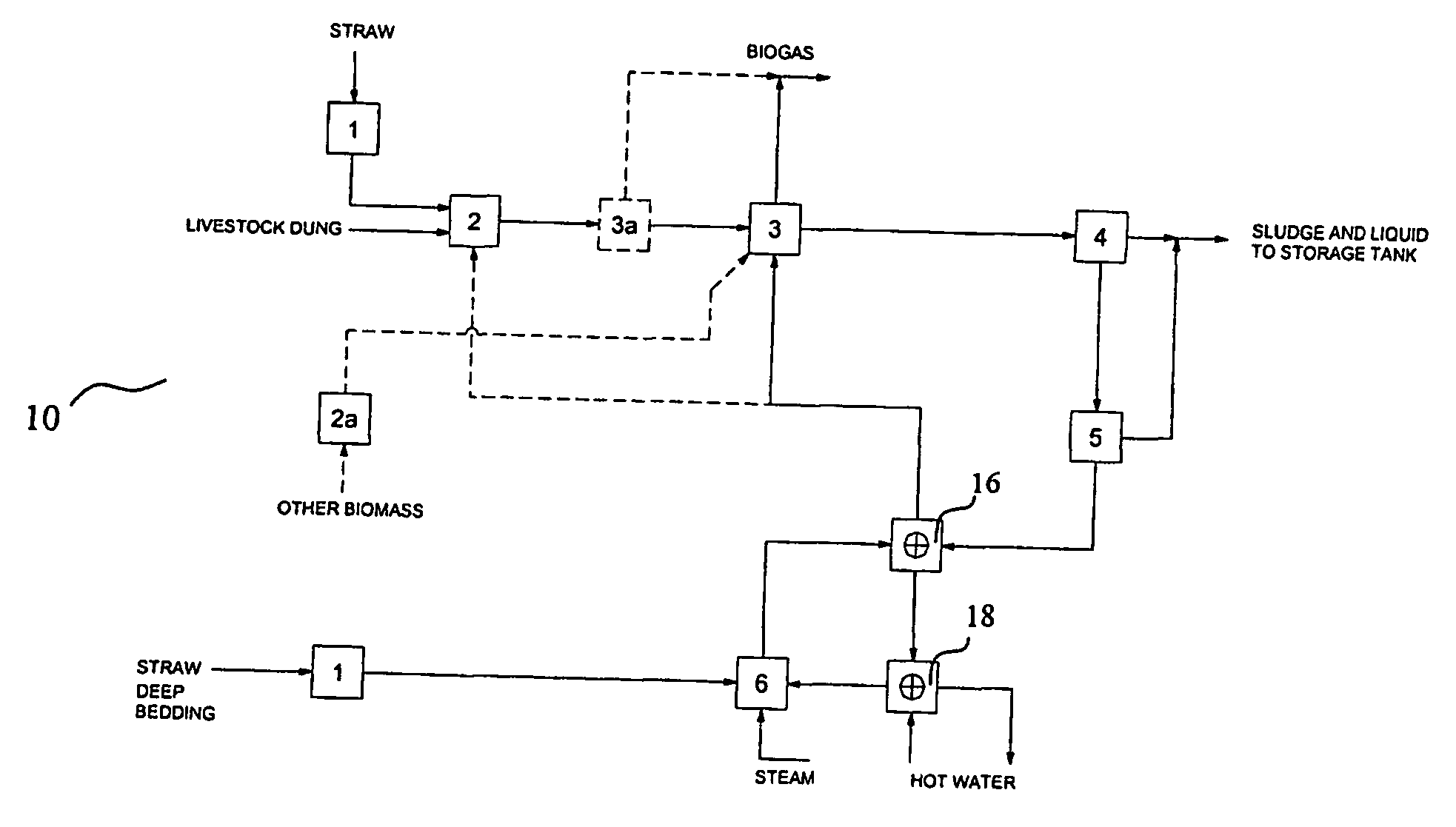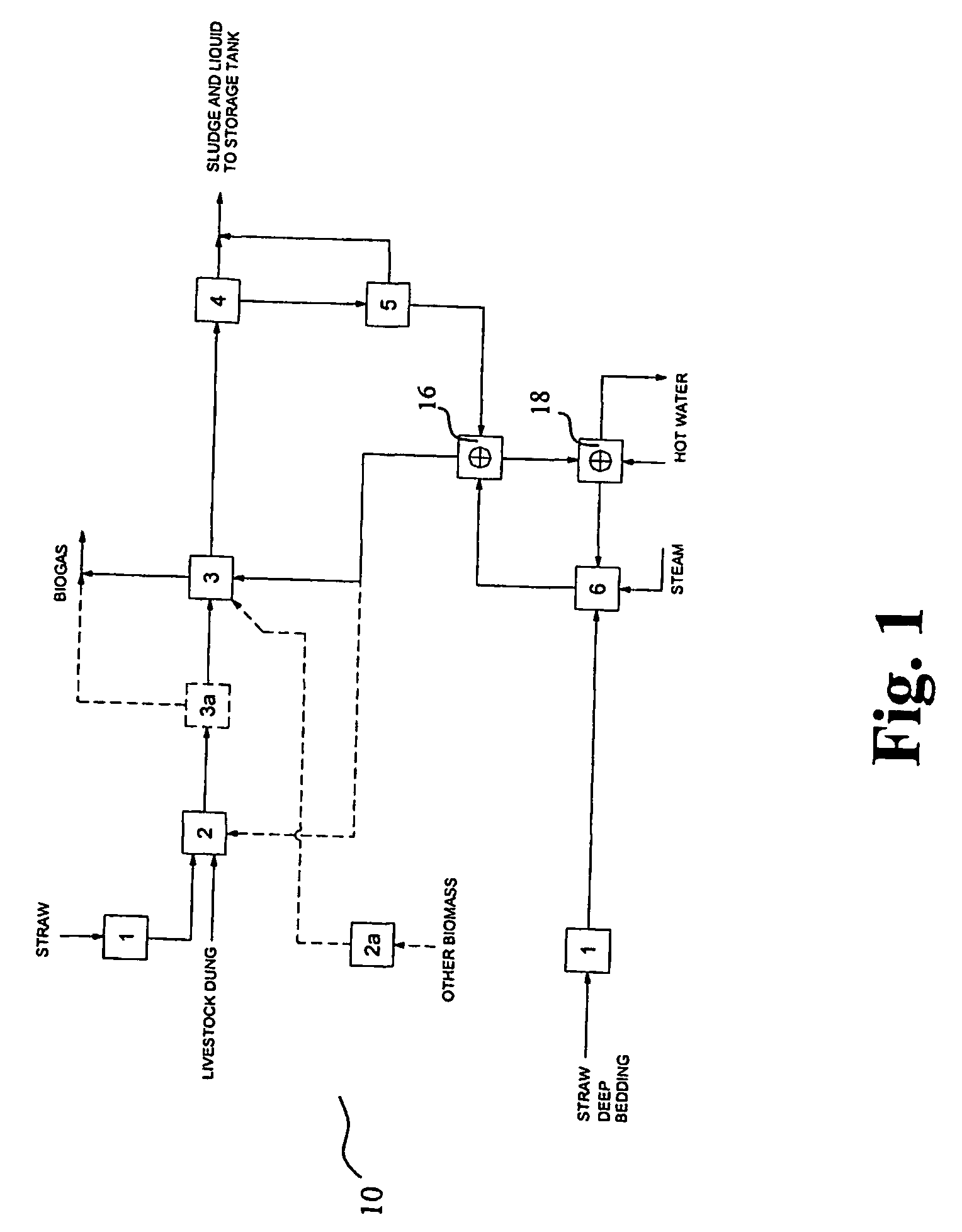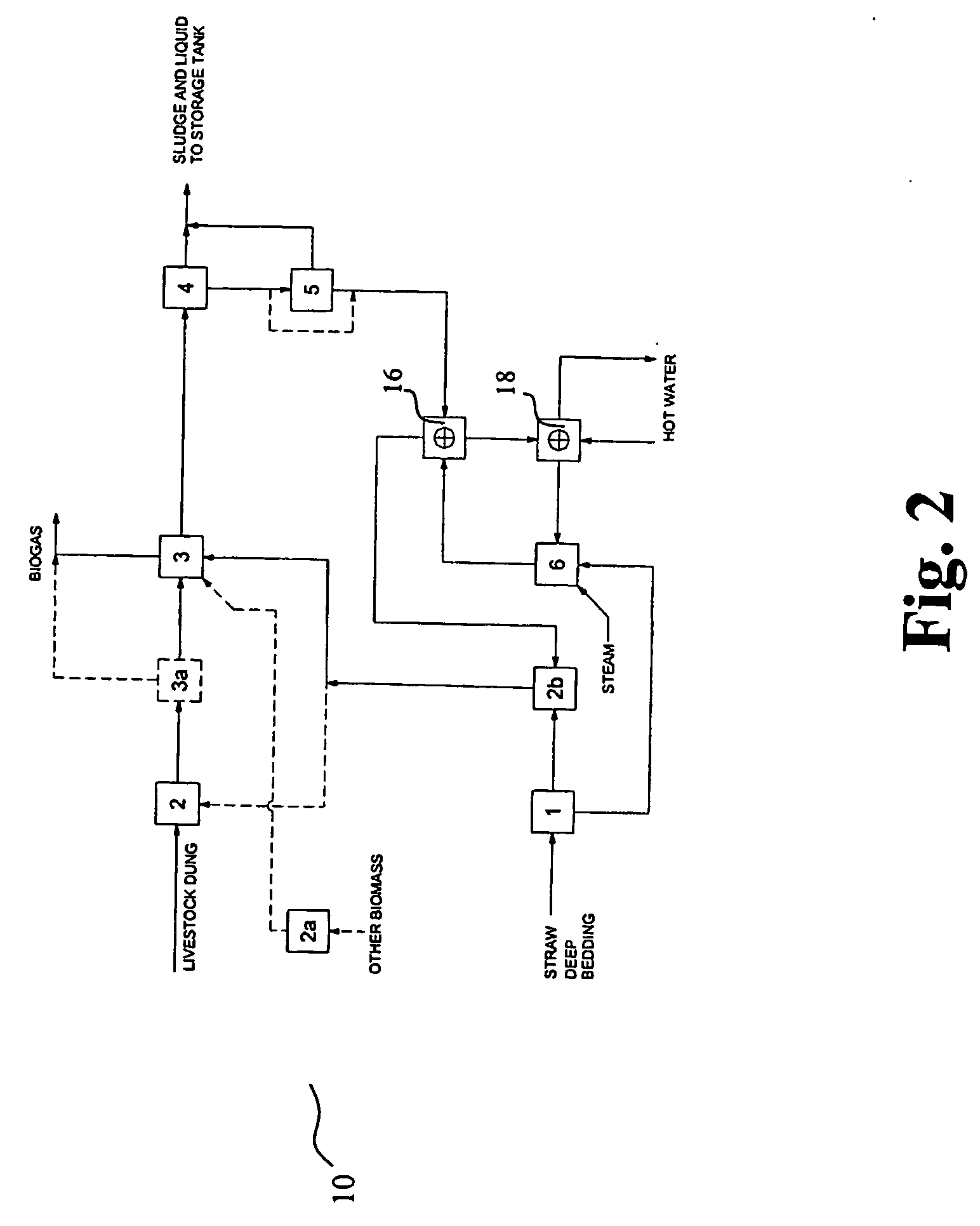Biogas producing facility with anaerobic hydrolysis
a technology of anaerobic hydrolysis and biogas, which is applied in the direction of biochemistry apparatus, gaseous fuels, biochemistry apparatus and processes, etc., can solve the problems of limited resources and high cost, and achieve the effect of reducing the required capacity, reducing investment and cost, and low operational cos
- Summary
- Abstract
- Description
- Claims
- Application Information
AI Technical Summary
Benefits of technology
Problems solved by technology
Method used
Image
Examples
Embodiment Construction
[0045]FIG. 1 schematically illustrates a biogas producing facility 10 for producing biogas from livestock dung mixed with organic waste, such as corn, grass, dry grass, fresh or dry straw, straw contained in livestock dung or in deep-bedding, silage, animal remains, etc. In the illustrated embodiment, the dung has low dry matter content so that a substantial amount of straw may be added to the dung. A partitioning device 1 cuts straw into straw parts having a mean length of approximately 5 to 10 cm. The cut straws and livestock dung are mixed in a tank 2, and the mixed matter is heat treated in a tank 3a, typically at 70-75° C., to kill unwanted bacteria. The heat-treated matter is fed into a first reactor 3 to be digested by bacteria for formation of biogas. Typically, the matter is digested for approximately 15-30 days depending on the reactor temperature. Typically, the reactor temperature ranges from 30° C.-55° C. A separator 4 separates particles larger than 0.2 cm to 2 cm, and...
PUM
 Login to View More
Login to View More Abstract
Description
Claims
Application Information
 Login to View More
Login to View More - R&D
- Intellectual Property
- Life Sciences
- Materials
- Tech Scout
- Unparalleled Data Quality
- Higher Quality Content
- 60% Fewer Hallucinations
Browse by: Latest US Patents, China's latest patents, Technical Efficacy Thesaurus, Application Domain, Technology Topic, Popular Technical Reports.
© 2025 PatSnap. All rights reserved.Legal|Privacy policy|Modern Slavery Act Transparency Statement|Sitemap|About US| Contact US: help@patsnap.com



